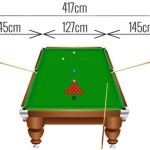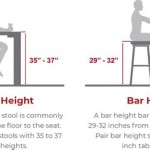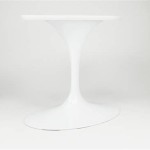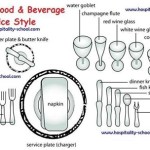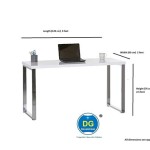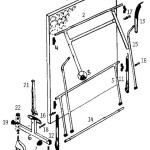Antique Drop Leaf Table Value: A Comprehensive Guide
Determining the value of an antique drop leaf table is a complex process influenced by a confluence of factors. These tables, characterized by their hinged leaves that can be lowered or raised to expand the surface area, have been a staple in homes for centuries. Understanding the elements that contribute to their worth is crucial for both sellers seeking to maximize their return and buyers aiming to make informed purchasing decisions.
The drop leaf table's popularity stems from its versatility and space-saving design. This adaptability has ensured its presence across various historical periods and furniture styles. Consequently, the market for antique drop leaf tables is diverse, encompassing a wide range of values. This article explores the key determinants of antique drop leaf table value, providing a detailed framework for assessment and appreciation.
I. Key Factors Influencing Value: Age and Origin
The age of a drop leaf table is a primary determinant of its value. Generally, older tables, particularly those from the 18th and early 19th centuries, command higher prices than those manufactured later. Identifying the precise age requires careful examination of construction techniques, wood types, and stylistic details. Original hardware, such as hinges and latches, can offer significant clues about the table’s period of origin.
The table's origin, often correlated with its age, also significantly impacts its value. Tables originating from specific regions or associated with renowned furniture makers are typically more valuable. For example, a drop leaf table crafted by a known cabinetmaker in Colonial America would likely be more valuable than a similar table of unknown origin produced in a later period. Furniture historians and appraisers often rely on stylistic characteristics and construction methods to pinpoint the origin of a piece.
Styles such as Queen Anne, Chippendale, and Federal are associated with specific periods and regions. Queen Anne drop leaf tables, characterized by their cabriole legs and graceful lines, were popular in the early to mid-18th century. Chippendale tables, featuring more elaborate carving and detailed ornamentation, represent a later 18th-century style. Federal style tables, often incorporating inlaid designs and delicate features, became prominent in the late 18th and early 19th centuries. Recognizing these stylistic nuances is essential for gauging the age and origin of a drop leaf table.
Material composition is also indicative of age and origin. Early drop leaf tables were often constructed from native hardwoods such as maple, cherry, and walnut. Later examples may incorporate mahogany, imported from the Americas, or other materials. The type and quality of the wood used can provide valuable insights into the table's age, origin, and overall quality.
II. Condition and Restoration: Preserving the Past
The condition of an antique drop leaf table is a critical factor in determining its value. A table in excellent original condition, with minimal wear and tear, will generally be more valuable than one requiring extensive restoration. However, complete originality is rare, and most antique furniture pieces exhibit some signs of age and use.
Significant damage, such as cracks, warping, missing veneer, or insect infestation, can substantially decrease the value of a drop leaf table. Conversely, minor imperfections that are consistent with age and use may be considered acceptable, and in some cases, even desirable, as they contribute to the table's character and authenticity. Appraisers typically assess the extent and nature of any damage to determine its impact on the overall value.
Restoration can be a double-edged sword. While careful restoration can improve the appearance and structural integrity of a drop leaf table, improper or overzealous restoration can diminish its value. Retaining original finishes and hardware is generally preferred, as these features contribute to the table's historical significance. Stripping and refinishing a table can remove valuable patina and reduce its authenticity.
Professional restoration by a skilled furniture restorer can be a worthwhile investment, particularly for valuable or historically significant pieces. A qualified restorer will employ techniques that minimize damage to the original fabric of the table and preserve its historical integrity. However, it's crucial to carefully weigh the cost of restoration against the potential increase in value. In some cases, the cost of restoration may exceed the table's potential value, making it a less viable option.
Potential buyers often prefer to see a table in its original condition, even if it exhibits some wear and tear, rather than a heavily restored piece. This preference reflects a desire for authenticity and a connection to the table's history. Therefore, it's essential to carefully consider the potential impact of any restoration work on the table's value and desirability.
III. Rarity and Desirability: Factors of the Market
Rarity is a significant determinant of antique drop leaf table value. Tables that are rare due to their unique design, unusual materials, or limited production numbers command higher prices. Identifying a rare table requires careful research and comparison to other examples in the market.
The presence of maker's marks or labels can significantly increase the value of a drop leaf table, particularly if the maker is well-known or highly regarded. These marks provide authentication and provenance, adding to the table's historical significance. However, the absence of a maker's mark does not necessarily diminish the table's value, particularly if its style and construction are indicative of a specific maker or period.
Desirability, influenced by current market trends and collector preferences, also plays a crucial role. Certain styles or periods may be more popular at any given time, leading to increased demand and higher prices. For example, mid-century modern drop leaf tables experienced a surge in popularity in recent years, driven by renewed interest in the design aesthetic of that era.
Subjective factors, such as the table's aesthetic appeal and its potential to complement a particular decorating style, can also influence its value. A table that is visually appealing and well-proportioned may be more desirable to collectors and buyers, even if it does not possess exceptional rarity or historical significance.
Changes in decor trends can have a significant impact on the market for antique furniture. What was once considered outdated or unfashionable can become highly sought after as tastes evolve. Staying informed about current trends and collector preferences is essential for accurately assessing the desirability and potential value of an antique drop leaf table.
The size and shape of a drop leaf table can also affect its desirability. Smaller tables that are suitable for apartments or smaller homes may be more desirable due to their practicality. Tables with unusual or distinctive shapes, such as oval or gateleg designs, may also command higher prices.
Provenance, or the history of ownership, can add significant value to an antique drop leaf table. If the table can be traced back to a notable owner or historical event, its value may be substantially increased. Documentation, such as bills of sale, photographs, or letters, can help to establish provenance and enhance the table's historical significance.
Ultimately, determining the value of an antique drop leaf table requires a comprehensive assessment of its age, origin, condition, rarity, and desirability. Consulting with a qualified appraiser or antique furniture expert can provide valuable insights and ensure an accurate valuation. Researching comparable sales data and staying informed about current market trends are also essential steps in the valuation process.
The combination of these factors ultimately dictates the market value of an antique drop leaf table. Understanding their interplay allows for a more informed appreciation of these functional and historically significant pieces of furniture.

Best Antique Drop Leaf Table For

Vintage 1920 S Oak Drop Leaf Table Resting On Barley Twist Supports In Antique Dropleaf Tables

135 Antique Drop Leaf Tables For Ingantiques Co

Antique Mahogany Drop Leaf Table

Vintage Oak Drop Leaf Table With Beautifully Carved Sides And Great Co Bridge Antiques

Antique Solid Mahogany Drop Leaf Table With Pedestal Base Carved Claw Feet Long Valley Traders

Vintage Heavy Dark Oak Gate Leg Table In Antique Dropleaf Tables

Antique Dropleaf Tables

Value Of An Antique Drop Leaf Table Thriftyfun

Vintage Drop Leaf Table With Jefferson Woodworking Slide Extension Hong Kong


